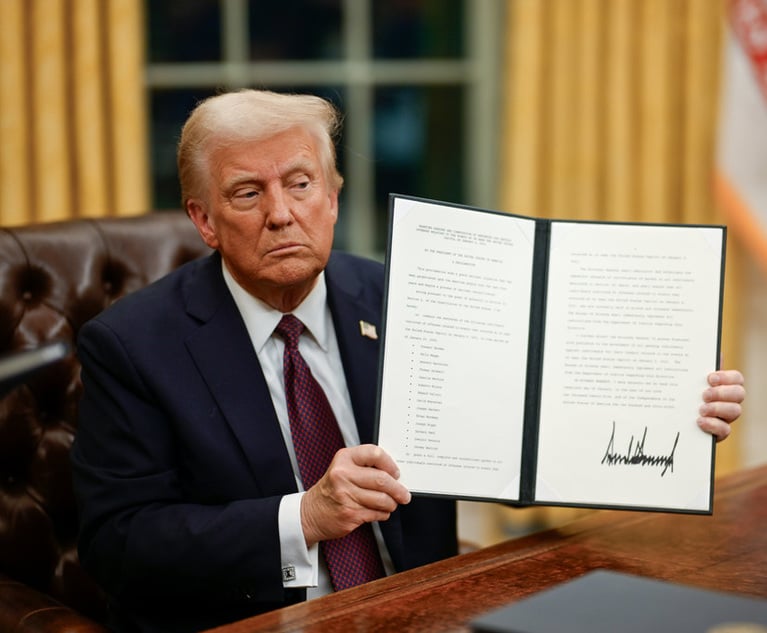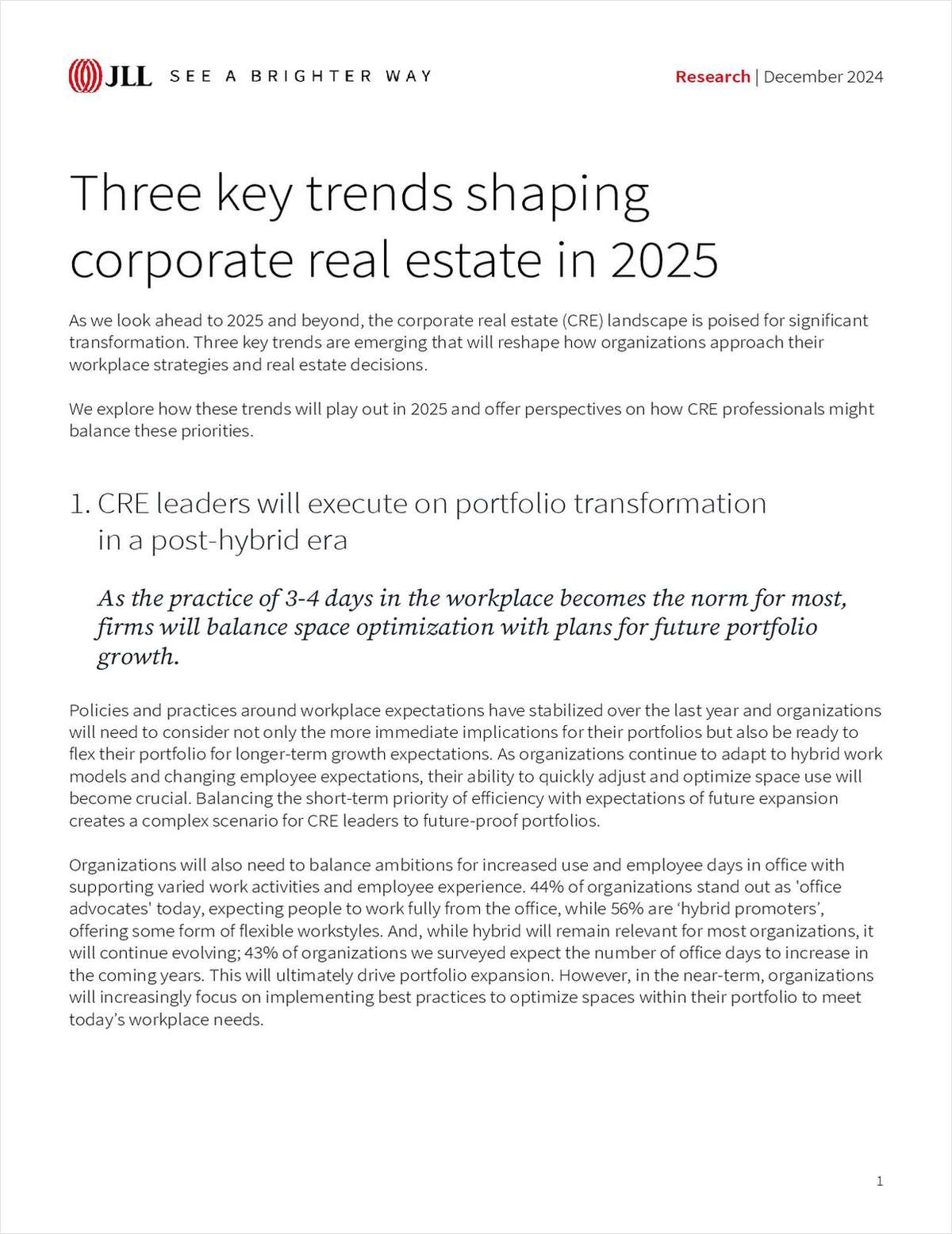California Court of Appeal Affirms Outlet Stores Can Sell Outlet Clothes
On Aug. 24, 2017, the California Court of Appeal affirmed that outlet stores can sell outlet clothes.
September 29, 2017 at 04:23 PM
5 minute read

On Aug. 24, 2017, the California Court of Appeal affirmed that outlet stores can sell outlet clothes. The need for this judicial proclamation was precipitated by a lawsuit filed by Linda Rubenstein against Gap alleging that it was fraudulent and unlawful for Gap to offer Gap branded merchandise at its outlet store that was not identical to the Gap branded merchandise offered at its non-outlet stores.
You might recognize the plaintiff's name from Rubenstein v. Neiman Marcus, an unpublished 9th Circuit decision from April 2017. In that case, the 9th Circuit reversed the district court's dismissal of Rubenstein's complaint that the price tags at Neiman Marcus's Last Call stores were false and misleading, and remanded the case back to the district court. In contrast, the California Court of Appeal affirmed the trial court's judgment sustaining Gap's demurrer without leave to amend in Rubenstein v. The Gap.
In Rubenstein v. The Gap, Rubenstein pled causes of action under California's Unfair Competition Law (“UCL”), False Advertising Law (“FAL”), and Consumers Legal Remedies Act (“CLRA”), based upon the allegation that Gap deceptively sold “lesser-quality Gap and Banana Republic clothing items at Gap and Banana Republic 'Factory Stores,'” that were “never sold at 'traditional' Gap and Banana Republic stores.” Rubenstein asserted that by using their brand names in their “factory” outlet stores, The Gap and Banana Republic were “communicating to the public that the Factory Store products are the same products of the same quality that consumers have come to associate with the Gap and Banana Republic brands.”
The Court of Appeal and the trial court disagreed and, in short, rejected Rubenstein's arguments across the board.
Specifically, the Court of Appeal found that Rubenstein had failed to show a violation of the UCL, FAL or the CLRA on a variety of grounds. First, she failed to make an allegation about any particular advertisement, promotional material or affirmative representation that purportedly misled her. Rather than identify a particular representation, Rubenstein alleged that Gap and Banana Republic's use of their brand names, in itself, was a representation that the items offered at their outlet stores were the same as those offered at their traditional retail stores. The court rejected this argument on its face: “As a matter of law, Gap's use of its own brand name labels on clothing that it manufactures and sells at Gap-owned stores is not deceptive, regardless of the quality of the merchandise or whether it was ever for sale at other Gap-owned stores.” Instead, the court pointed out that “[r]etailers may harm the value of their brands by selling inferior merchandise at factory stores, but doing so does not constitute false advertising.”
Second, the court disagreed with Rubenstein that Gap and Banana Republic had a duty to disclose that the items sold at their outlet stores were different than the items sold at their traditional stores. The court rejected Rubenstein's argument that reasonable consumers, based on use of brand names, would expect the items offered at the outlet stores previously to have been offered at the non-outlet stores.
Finally, the court found Rubenstein had failed to present any facts that the clothing offered at Gap and Banana Republic outlet stores had any quality issues. Thus, the court found, Rubenstein lacked standing because she failed to show she suffered any harm.
The court also rejected the position offered by the California Attorney General, as amicus curiae. The Attorney General asserted that the court, in assessing whether Gap had a duty to disclose, should “examine the context of a business practice to determine whether it is likely to deceive consumers by reinforcing their misleading expectations or assumptions” instead of applying the more narrowly defined test in LiMandri v. Judkins, 52 Cal. App. 4th 326 (1997). In LiMandri, the duty to disclose was limited to the following four circumstances: “(1) when a defendant is in a fiduciary relationship with plaintiff; (2) when a defendant had exclusive knowledge of material facts not known to plaintiff; (3) when a defendant actively conceals a material fact from plaintiff; or (4) when a defendant makes partial representations but also suppresses some material facts.” The court found no reason to stray from LiMandri, especially in light of the substantial amount of precedent on the issue.
A number of lessons can be learned from Rubenstein's Gap case that will be useful to companies challenging complaints raising similar allegations regarding other outlet stores:
- A reasonable consumer would not assume that the merchandise offered at a brand's outlet store is the same as the merchandise offered at that brand's non-outlet store.
- A reasonable consumer would not assume that the merchandise offered at a brand's outlet store was previously offered at that brand's non-outlet store.
- A brand may offer brand-named clothing at its outlet store that is not identical to the brand-named clothing offered at its non-outlet store without being fraudulent, deceptive, misleading, unlawful, or unfair to its customers (at least according to the opinion of the California Court of Appeal, Second Appellate District, Division One).
- A brand is free to use its brand-name to promote and sell brand-named goods different from that which is typically sold by the brand.
Amy Lally is a partner in Sidley Austin LLP's Los Angeles office. Rachel Goldberg is an associate at Sidley Austin LLP's Los Angeles office.
This content has been archived. It is available through our partners, LexisNexis® and Bloomberg Law.
To view this content, please continue to their sites.
Not a Lexis Subscriber?
Subscribe Now
Not a Bloomberg Law Subscriber?
Subscribe Now
NOT FOR REPRINT
© 2025 ALM Global, LLC, All Rights Reserved. Request academic re-use from www.copyright.com. All other uses, submit a request to [email protected]. For more information visit Asset & Logo Licensing.
You Might Like
View All



Trending Stories
Who Got The Work
J. Brugh Lower of Gibbons has entered an appearance for industrial equipment supplier Devco Corporation in a pending trademark infringement lawsuit. The suit, accusing the defendant of selling knock-off Graco products, was filed Dec. 18 in New Jersey District Court by Rivkin Radler on behalf of Graco Inc. and Graco Minnesota. The case, assigned to U.S. District Judge Zahid N. Quraishi, is 3:24-cv-11294, Graco Inc. et al v. Devco Corporation.
Who Got The Work
Rebecca Maller-Stein and Kent A. Yalowitz of Arnold & Porter Kaye Scholer have entered their appearances for Hanaco Venture Capital and its executives, Lior Prosor and David Frankel, in a pending securities lawsuit. The action, filed on Dec. 24 in New York Southern District Court by Zell, Aron & Co. on behalf of Goldeneye Advisors, accuses the defendants of negligently and fraudulently managing the plaintiff's $1 million investment. The case, assigned to U.S. District Judge Vernon S. Broderick, is 1:24-cv-09918, Goldeneye Advisors, LLC v. Hanaco Venture Capital, Ltd. et al.
Who Got The Work
Attorneys from A&O Shearman has stepped in as defense counsel for Toronto-Dominion Bank and other defendants in a pending securities class action. The suit, filed Dec. 11 in New York Southern District Court by Bleichmar Fonti & Auld, accuses the defendants of concealing the bank's 'pervasive' deficiencies in regards to its compliance with the Bank Secrecy Act and the quality of its anti-money laundering controls. The case, assigned to U.S. District Judge Arun Subramanian, is 1:24-cv-09445, Gonzalez v. The Toronto-Dominion Bank et al.
Who Got The Work
Crown Castle International, a Pennsylvania company providing shared communications infrastructure, has turned to Luke D. Wolf of Gordon Rees Scully Mansukhani to fend off a pending breach-of-contract lawsuit. The court action, filed Nov. 25 in Michigan Eastern District Court by Hooper Hathaway PC on behalf of The Town Residences LLC, accuses Crown Castle of failing to transfer approximately $30,000 in utility payments from T-Mobile in breach of a roof-top lease and assignment agreement. The case, assigned to U.S. District Judge Susan K. Declercq, is 2:24-cv-13131, The Town Residences LLC v. T-Mobile US, Inc. et al.
Who Got The Work
Wilfred P. Coronato and Daniel M. Schwartz of McCarter & English have stepped in as defense counsel to Electrolux Home Products Inc. in a pending product liability lawsuit. The court action, filed Nov. 26 in New York Eastern District Court by Poulos Lopiccolo PC and Nagel Rice LLP on behalf of David Stern, alleges that the defendant's refrigerators’ drawers and shelving repeatedly break and fall apart within months after purchase. The case, assigned to U.S. District Judge Joan M. Azrack, is 2:24-cv-08204, Stern v. Electrolux Home Products, Inc.
Featured Firms
Law Offices of Gary Martin Hays & Associates, P.C.
(470) 294-1674
Law Offices of Mark E. Salomone
(857) 444-6468
Smith & Hassler
(713) 739-1250










